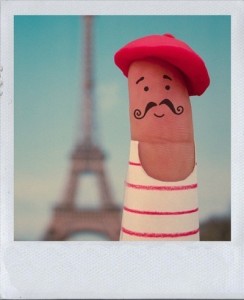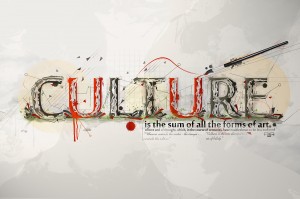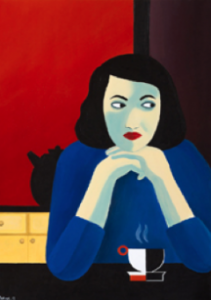Paris & Culture in International Waters.
Hello the world ! Voici venir une nouvelle rubrique ! La Péniche a le plaisir de vous annoncer l’internationalisation du Magazine. Dans Paris & Culture in International Waters, retrouvez un Paris et une Culture comme vous ne les avez jamais vus, sous l’oeil décalé et sous la plume anglophone des étudiants internationaux de Sciences Po ! Ils vous livrent leurs impressions sur la capitale, leurs émotions sur leur nouvelle vie, et leurs bons plans culturels, avec une fraîcheur des plus plaisantes. Aujourd’hui, nous inaugurons la rubrique avec l’article de Felicity Kneeshaw, étudiante venant d’Angleterre.
In 1863 Baudelaire wrote: “The world — and even the world of artists — is full of people who can go to the Louvre, walk rapidly, without so much as a glance, past rows of very interesting, though secondary, pictures, to come to a rapturous halt in front of a Titian or a Raphael… then they will go home happy”. It is easy enough to do, ticking off the sights without pausing to really appreciate the city, but if I’ve learnt anything here this year, it’s the importance of taking the time to explore and uncover what isn’t necessarily in the guidebooks.
Since I was little I’ve always heard of Paris as the capital of culture, the home of countless writers, artists, iconic landmarks and museums… This was the side I couldn’t wait to discover when I arrived here on exchange last August. Having grown up in an English village, Paris seemed huge at first, and I have loved being able to walk out of my door and find something different to do every day. However, I soon realized that it was more a question of a vast amount of cultural activity being crammed into what is actually quite a small city.
I thought I knew what to expect – architecture, fashion, music, world-famous museum collections and blockbuster retrospectives – and I wasn’t wrong. All these things have been incredible, although you do have to get past the inevitable queues. I have stood in line for hours to get into the Grand Palais or buy tickets for the Opera, given up on Edward Hopper, and tactically analysed the Centre Pompidou’s charts to avoid the crowds for Dali (tip: go on Sunday evening).
But there is so much more than the tourist trail, and what I did not expect before was the sheer extent and variety of Parisian culture. Every other street seems to lead to a tiny gallery or a hidden courtyard, a brilliantly incongruous work of street art or a café with some literary claim to fame. Wandering through the city can sometimes lead to the most unexpected gems, and the Nuit Blanche encapsulated this: Paris went nocturnal and strange installations sprung up everywhere. I discovered a bubble machine in the Archives and melting wax statues at the Ecole des Beaux Arts. Whether bizarre or beautiful (or both!) it is the smaller and more unusual events that I have most enjoyed.
So, last week I went to the Marjane Satrapi exhibition, held at the Galerie Jerome de Noirmont and away from the crowds. This is the first time the author of Persepolis (her autobiographical account of growing up in Iran) has shown her paintings and after seeing the exhibition I wondered why she waited so long.
On display are a series of portraits of women all in the same distinctive style, which at first left me a little underwhelmed – bold primary colours, block shapes and a rather 2d nature. Yet the longer I spent there, the more I realized I was wrong; the paintings are actually incredibly expressive. Her individual portraits show a succession of women with red lips and waves of black hair, lost in their own thoughts and each with an undeniable character – pensive, haughty, kind, strict… One gets the sense she really knows her subjects and we are left wanting to as well. Instead they are disconnected from us, always looking away: my favourite, a beautiful young woman with a beauty spot sat against a Mondrian-style background, stares off to the side of the frame, her thoughts inscrutable.
In her other paintings the characters are grouped in twos or fours and the focus is on the connections between them, with a touch of Satrapi’s characteristic humour. This is not a portrayal of feminine solidarity or a maternal bond; rather, the women regard each other with suspicion or amusement. As I was there on International Women’s Day, it was tempting to read something into her depiction of only women. However, she herself disregards feminist interpretations, and any attempt at finding a message in the spirit of Persepolis was quickly forgotten; instead the characters themselves drew me in as I tried to discover their history, thoughts and relationships with those around them. In short, I thought the paintings were beautiful; their apparent simplicity belies how touching, thoughtful and funny the portraits are.
As the second half of the semester gets underway, it is easy to get waylaid by the next exposé and forget about all that is going on outside of Sciences Po. So, whether here on exchange or a vrai français, my advice would be to make the most of all that Paris has to offer – starting with the Marjane Satrapi exhibition before it ends on the 23rd March.
Felicity Kneeshaw.


